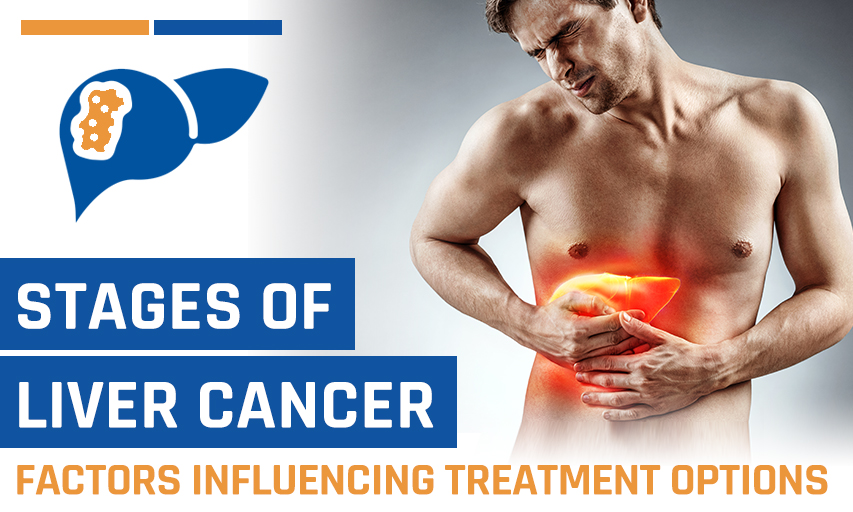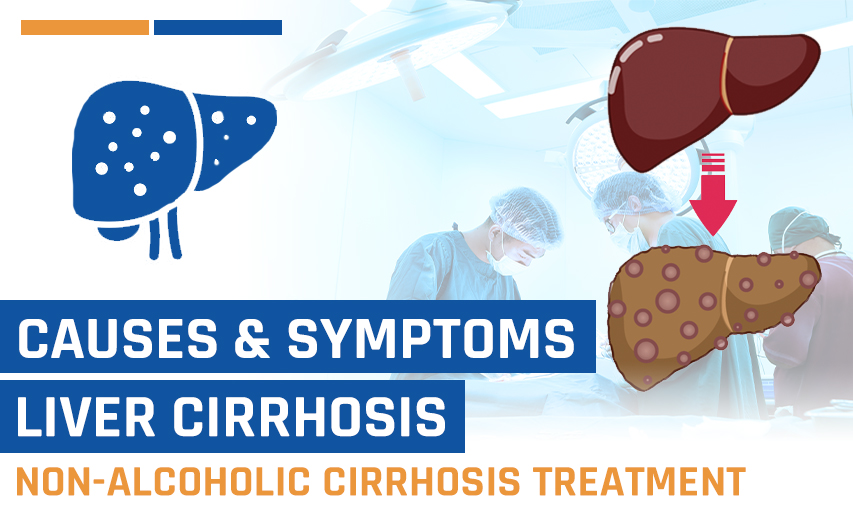Stages of Liver Cancer and How the Treatment Options Vary
Liver cancer is a serious health problem that affects thousands of people across the globe. It is particularly challenging due to its often late-stage diagnosis and treatment. Furthermore, liver cancer treatment can be expensive in countries like Russia because of its high costs and long waiting periods. This is why patients from Russia are now choosing to travel to India for effective liver cancer treatment. India is, without a doubt, the preferred destination for international patients seeking quality treatments, world-class doctors, and the most competitively priced treatments.
One of the most critical factors in determining the best treatment approach is the stage of liver cancer at diagnosis. Staging can help doctors determine the severity and spread of cancer and hence the best treatment options. As liver cancer progresses, the treatment options get more complex, thus making the need for early detection highly platonic for better outcomes. Let’s understand the stages of liver cancer, how to identify each stage, and how the liver cancer treatment options vary.
What are the Staging Systems for Liver Cancer?
Liver cancer can be classified into several stages depending on the progress of the disease. Two of the most frequently employed staging systems are the TNM system and the Barcelona Clinic Liver Cancer classification system.
■ TNM system
The TNM system evaluates three primary factors. The first one, T, refers to the tumour component, which measures the size and number of tumours in the liver. N is for nodes, which checks whether the cancer spreads to nearby lymph nodes. M indicates metastasis; it tells if the cancer spreads elsewhere besides the liver. These three factors help doctors classify the stage of liver cancer and guide treatment strategies accordingly.
■ BCLC system
The BCLC system is another commonly used approach that categorises liver cancer into five distinct stages: from stage 0 (Very Early Stage) to stage A (Early Stage), B (Intermediate Stage), C (Advanced Stage), and lastly D (End Stage). This system consisted of both the characteristics of tumours and liver conditions, along with the overall health of the patient and the phenomenon of the presence or absence of symptoms.
Staging is important in the management of liver cancer since it provides clues to the prognosis and treatment decisions. Patients diagnosed at an early stage often have a much greater potential for curative therapies focused on surgical interventions or liver transplantation. In contrast, advanced-stage patients will sometimes require therapy targeted to specific needs, immunotherapy, or even palliative care to enhance their quality of life. Understanding the stage of liver cancer enables doctors to recommend the most effective treatment plan and enhances the chances of better patient outcomes.
What are the Stages of Liver Cancer?
■ Stage 0 Liver Cancer (Very Early Stage)
In this zero-stage liver cancer, the tumour is under 2 cm with no vascular invasion, and liver function is normal.
Treatment options:
- Surgical resection or removal of a tumour ensures liver function is preserved.
- Liver transplantation for appropriate patients
- Local ablation therapy, such as radiofrequency ablation or microwave ablation
Prognosis: Excellent results, if early treated, often beyond five years long-term outcomes.
■ Stage A Liver Cancer (Early Stage)
This stage of liver cancer refers to a period in which the person carries minimal single or multiple tumours but retains very normal liver function.
Treatment options:
- Surgical if liver functions are satisfactory and the disease is limited.
- A liver transplant is the best treatment if there are multiple small tumours.
- Ablation therapy (for patients contraindicated for surgery)
- We provide targeted therapy for some patients with additional risk factors.
Prognosis: Good with interventions and regular follow-up.
■ Stage B Liver Cancer (Intermediate Stage)
The patient has multiple liver tumours without a blood vessel invasion or distant spread.
Treatment options:
- Transarterial chemoembolization (TACE) (the most effective modality for this stage)
- Systemic therapy (likely for non-surgery candidates)
Prognosis: Moderate, with survival ranging from 2 to 4 years, depending on response to therapy.
■ Stage C Liver Cancer (Advanced Stage)
The tumour has invaded nearby blood vessels or spread to nearby organs.
Treatment options:
- Targeted therapy (drugs like Sorafenib and Lenvatinib slow cancer progress).
- Immunotherapy is in the form of checkpoint inhibitors (e.g., Nivolumab, which improves outcomes).
- Clinical trials involve both experimental treatments and new therapies.
Prognosis: Limited survival, but new treatments are beginning to change the outcome.
■ Stage D Liver Cancer (End-Stage)
Extensive liver damage, poor liver function, and cancer spread in various body areas to a significant extent in this stage of liver cancer.
Treatment options:
- Palliative care (focused on alleviating pain and treating symptoms).
- The goal is to relieve pain by improving the quality of life in terminal stages.
Prognosis: The treatment for this stage typically focuses on comfort rather than achieving curative goals, and the life expectancy is usually short.
What Are the Factors Influencing Liver Cancer Treatment Options?
There are certain considerations, apart from the stage of liver cancer, that influence treatment decisions. These are:
■ Patient's general health and liver function: Patients who have cirrhosis or other liver ailments do qualify to receive aggressive treatment like surgical intervention or even transplantation.
■ Availability of organ donors: An ideal form of curative treatment is a liver transplantation procedure, which is limited in application since it relies on an individual's existence as a donor.
■ Response to the first treatment: When the first-line treatment does not receive a favourable response from the patient, the doctors usually switch to other modalities, including immunotherapy and clinical trials.
Why Choose India for Liver Cancer Treatment?
Several international patients, especially from Russia, prefer India as their destination for liver cancer treatment for the following reasons:
■ World-class hospitals: The best cancer hospitals in India feature high-quality diagnostic and treatment technologies.
■ Highly experienced oncologists: Indian doctors and oncologists are reputed all over the world for their skills in treating liver cancer.
■ Cost-effective treatment: The cost of liver cancer treatment in India is significantly lower than that in Western countries.
All-Round Patient Care: Indian hospitals give special care and assistance to international patients for a smooth treatment journey.
Bottom Line: Why is Identifying the Stage of Liver Cancer Important?
Timely diagnosis of liver cancer is vital to providing a patient with the very best possible treatment opportunity. By identifying the stage of liver cancer early, doctors can recommend the most effective treatment plan, whether it's surgery, targeted therapy, or palliative care. Patients from Russia are now travelling to India for the latest modalities of cancer care by some of the best specialists with the streaming-high survival rates. Regular check-ups, lifestyle changes, and consultations with a liver cancer specialist can make a huge difference in prognosis. If you are or know someone at risk of liver cancer, medical advice will give you the best treatment options.




















Be First To Comment
Leave a Comment